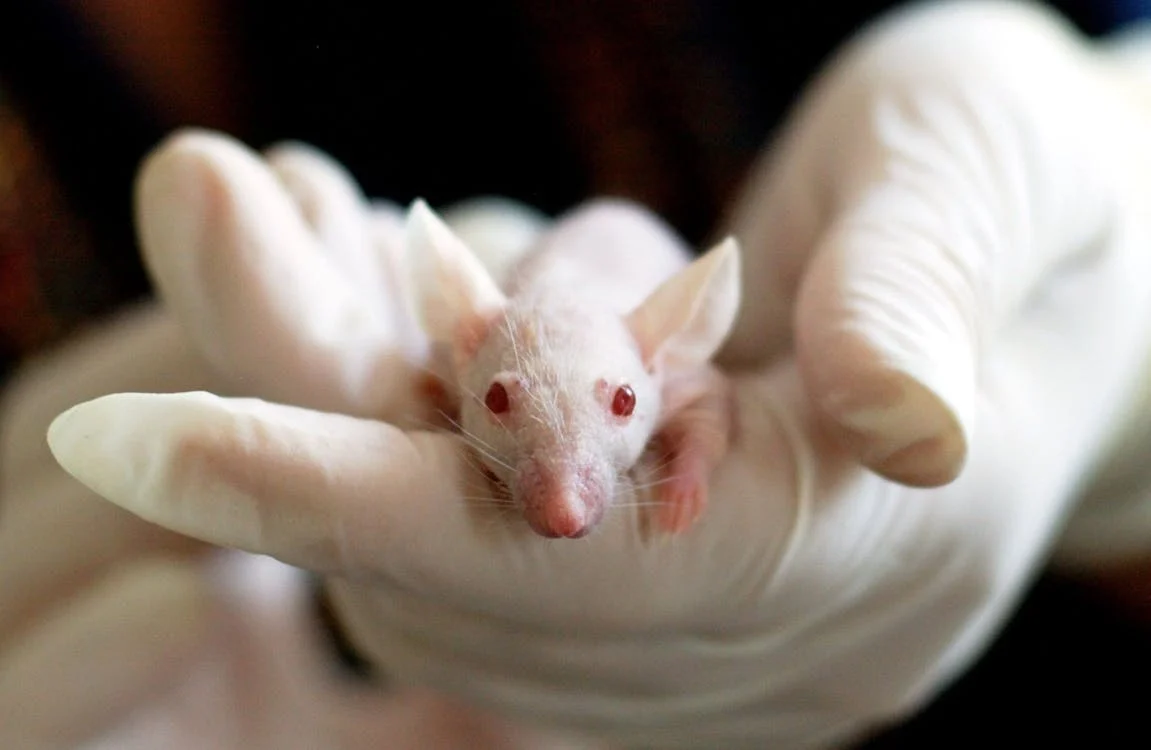Originally published on January 19, 2023, this article has been updated on October 13, 2023 to reflect the latest research and statistics. Our editorial team has ensured you’re viewing the most current data on this topic. Need help or have a question? Email us.
Animal testing is the process of using animals as guinea pigs for human inquisition and has been going on for decades. During testing, experimenters force animals to endure often barbaric treatments to see what the results will be.
There are two primary forms of animal experimentation.
- Field studies: Field study allows us to observe an animal under different conditions in order to learn more about the species.
- Clinical trials: Clinical trials are most often performed by laboratories or universities and focus on using animals as a medium for the trial-and-error process of clinical investigation.
Historically, animal testing was the primary way for humans to understand disease biology better. However, my personal belief is that as technology has advanced, there are many other options out there besides animal experimentation.
Interesting Facts about Animal Testing
Below are five interesting facts about animal testing and animal experiments.
- Over 110 million animals are used in experiments every year globally.
- Over 90% of items tested on animals fail human clinical trials.
- It takes 12,000 animals and 50 different experiments to pass just one single pesticide.
- Some experiments on animals include impregnating females just to run tests on their fetuses.
- Animal Welfare Act (AWA) offers minimal protection when it comes to animal labs using mice, rats, hamsters, birds, reptiles, amphibians, and other animals for their experiments.
Which Animals Are Mostly Used for Testing?
Mice and rats are the animals most frequently used for testing. Research suggests that up to 95% of animals tested in US labs are rodents.
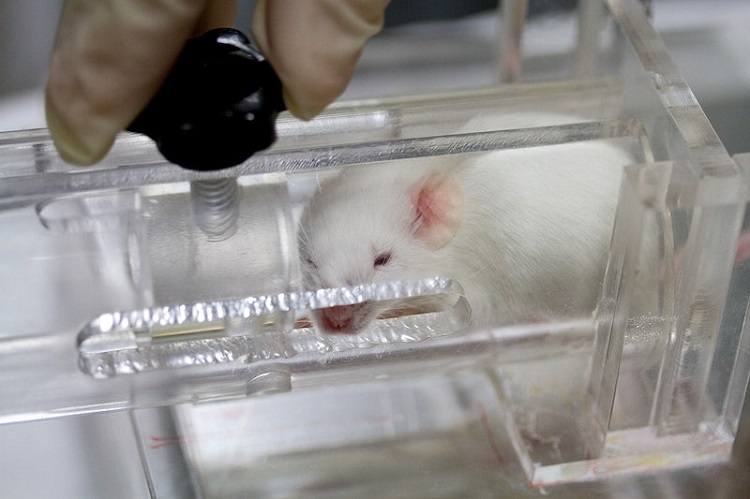
The reason for the high usage of mice and rats in animal experiments is that they are astonishingly similar to humans when it comes to behavior, biological, and genetic characteristics.
One valid alternative to using laboratory animals such as mice and rats is to either use advanced computer modeling and algorithms to forecast scenarios accurately or to use human cells and run tests on a microscopic cellular level.
Areas in Which Animal Testing Occurs
Excluding species research, there are two core areas where animal testing and animal research occur.
- Cosmetics testing: The cosmetic industry often performs animal experiments on a range of animals to ensure their make-up products will not cause any adverse reactions when they hit the market.
- Drug testing: Animal testing for pharmaceuticals often happens before human clinical trials begin. Animals in laboratories are kept in barren cages and experience extreme distress.
Cosmetics Testing
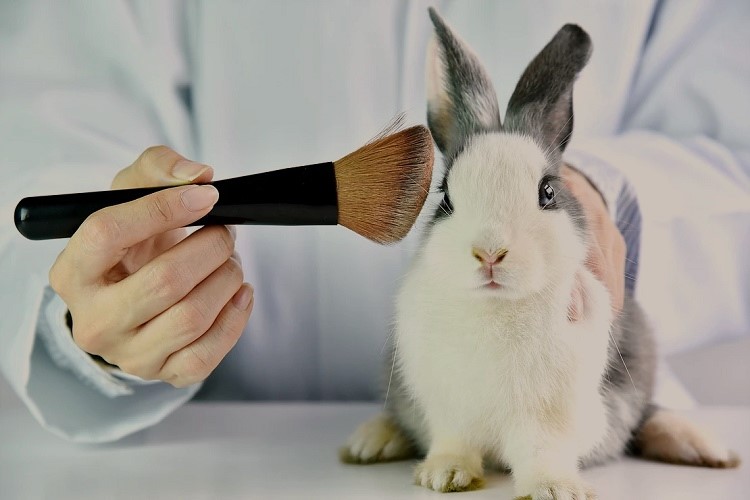
Animal testing for cosmetics was banned in a total of forty-four countries across the globe, according to the Humane Society. It includes the whole of Europe. However, there are plenty of countries where no bans are in place.
The two countries that perform the most cosmetic experiments on animals are China and the United States.
The actual experiments used in cosmetic testing include skin and eye irritation tests. Animals are shaved and have their bare skin and eyes exposed to potentially harmful chemicals to see how they react.
Drug Testing
Most countries require any new pharmaceuticals to undergo rigorous animal testing and approval before being pushed forward for human trials. On average, each drug requires approximately 5,000 animals merely to get through regulatory testing.
Not only are animal experiments cruel and barbaric but the animals are also housed in horrendous conditions. Most animals are confined to tiny, barren cages. Often, painful experiments are conducted without pain relief.
The worst part is that over 90% of animal tests fail human clinical trials, rendering animal use in testing pointless.
Animal Experiments Worldwide
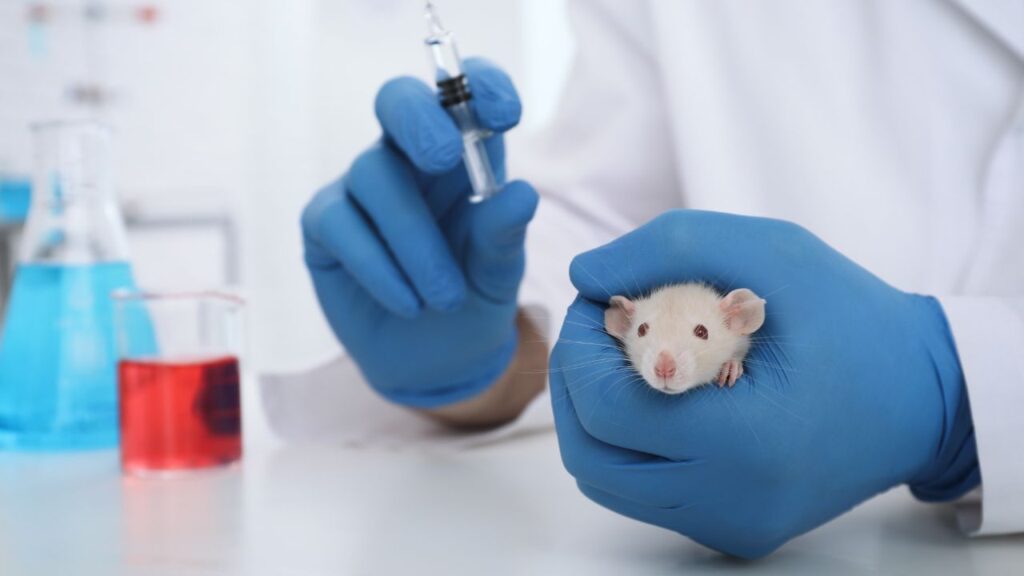
Every year, over 115 million animal experiments take place worldwide. China is responsible for the most animal testing, while the United States is second, with over 15 million instances of animal experimentation.
The most common types of animal testing procedures revolve around regulatory testing to ensure products are safe for human use.
Below are the thirteen most common animal trials worldwide.
- Medicines
- Chemicals
- Laundry detergent
- Paints
- Dyes
- Inks
- Petrol products
- Solvents
- Tars
- Waste materials
- Pesticides
- Biocides
- Food additives
- Cosmetics
How Is Animal Testing Monitored in Europe?
Animal testing is strongly monitored across Europe and is governed by several strict regulations.
Animal testing in Europe has been banned for all cosmetics. However, animal experimentation does still happen for other regulatory testing requirements.
While animal experimentation is still active in Europe, recent amendments to a European-wide Animal Welfare Act have set a target of completely removing all animals from scientific testing.
In addition, a further amendment was made in 2019 directed toward increasing the transparency of animal experiments.
Is There Animal Testing in the UK?
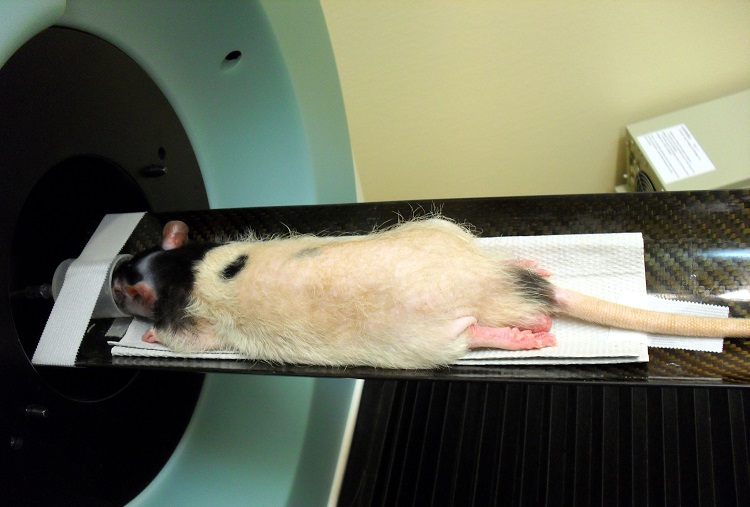
Yes, there is animal testing in the UK. Approximately 3 million animals are used in experiments in the UK every year. Sadly, one animal dies every eight seconds as a direct result of animal testing.
That said, the UK is making great strides toward reducing animal trials and doing more to protect animals.
In 1997, the UK introduced a ban on all animal testing pertaining to the tobacco industry. This was followed a year later by a blank ban on all animal testing for cosmetics. Further to that, the UK has banned the import and selling of animal-tested cosmetics.
In 2015, the UK also introduced a complete ban on the use of animal experiments for any household products such as bleach or laundry detergent. The United Kingdom is ranked third behind Austria and Switzerland as the country with the best animal protection laws.
What Makes Animal Testing Imprudent and Unreliable
There are three primary reasons why animal testing is imprudent and unreliable.
Laboratory Conditions and Variables
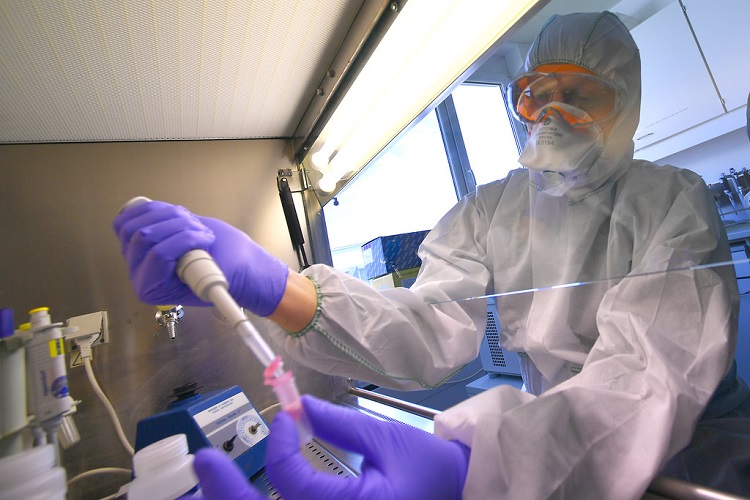
Animals are used as guinea pigs in experiments performed under a series of strict conditions designed to monitor specific responses. However, this can never be directly correlated back to human reactions, making the effectiveness of such experiments doubtful.
The strict variable settings used in laboratory experiments are a poor reflection of real-world interactions.
Additionally, animals tested are kept under strict living conditions. They are denied freedom and often do not get fresh air or any form of natural environment exposure. This can change their physiology.
Even minute changes in body chemistry could have a far-reaching impact on the reliability of any experiment results.
Disease Differences in Human and Animal Models
Many human disease models cannot be naturally reproduced and so are artificially induced in test animals. This step alone should nullify the results of many experiments.
Human and animal biometrics vary greatly. When researching things on a cellular level, even small differences can have huge consequences. Millions of animals are suffering every year for tests that are flawed from the outset.
Some documented examples include scientists researching strokes, traumatic brain injuries, and Alzheimer’s disease.
Genetic Differences Impact Reactions
There are genetic differences between humans and animals that will always render the results of such experiments moot.
Subtle differences down to electrokinetic phenomena can skew even the most sophisticated new methodologies.
There are those who argue that animal testing is merely to prove the validity of a hypothesis.
Human trials are then used to validate the end product. But when there are better and more reliable options, such as human tissues and cell-based investigation, it seems redundant to continue subjecting animals to unreliable experiments.
What Are the Best Animal Testing Alternatives?
There are three core alternatives to animal experiments and testing. Each of these would be a cruelty-free form of research that private companies could introduce without much fuss.
In Vitro
Modern technology has given us the ability to create ‘cells-on-chips.’ This process uses human tissue and cells with a microfluidic culture device.
These biological microchips allow scientists to recreate human biometric processes and allow for accurate experimentation and testing.
There are several other methods of In Vitro testing that replace live animal research. All involve cellular experimentation on human tissue samples.
Computer Modeling
There are several highly specialized computer models that can accurately reproduce human biology. Using these models as a replacement for animal research will save the lives of countless scientific guinea pigs.
The results of computer modeling should be enough to justify a move toward trials with a selected group of humans.
Testing with Human Volunteers
If running animal experiments wasn’t a problem, why should using willing human volunteers be any different?
Many animal experiments involve shaving the animals, exposing their shaved skin and eyes to chemicals, or attaching electrodes to their brain and spinal cords. That should be against every animal care guide in the world and would be for people.
However, if the above three phases were combined, new drugs would hit their real trials with a more well-rounded picture of what the new drug can do. It could usher in a far more reliable period of medical progress.
Which Institutions Are Making Efforts to Stop Animal Testing?
There are five key institutions making concerted efforts to stop animal testing.
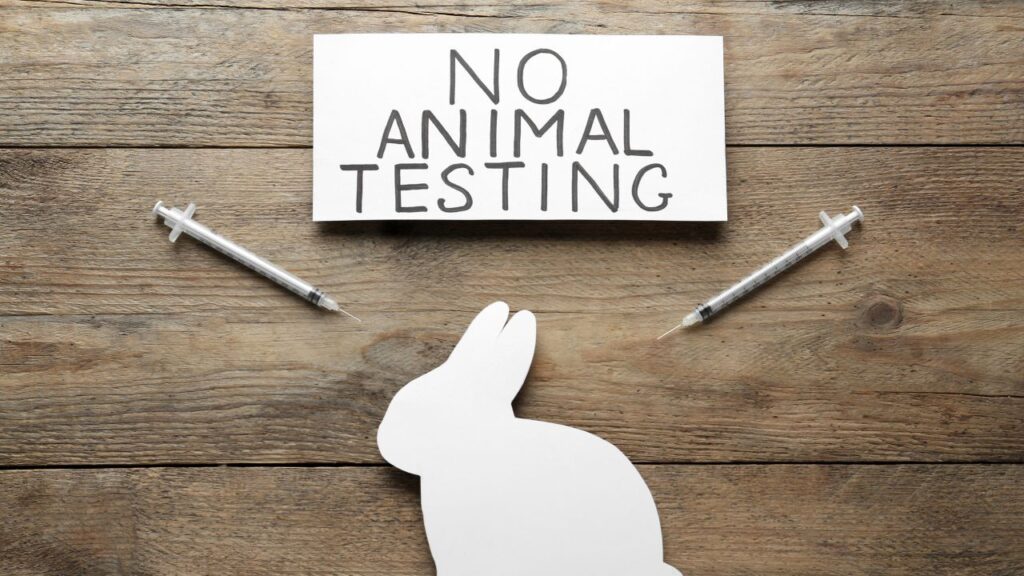
- European Coalition to End Animal Experiments (ECEAE): The ECEAE has been the voice against animal experimentation for over twenty-five years. They were pivotal in the introduction of the Humane Cosmetics Standard.
- PETA: PETA is a nonprofit organization that works tirelessly for the better treatment of animals. PETA has donated more than $1 million in an effort to find non-animal-related ways of testing.
- Coalition for Consumer Information on Cosmetics (CCIC): It is a US-based institution campaigning for better animal care.
The CCIC has created a resource database of all companies that do and do not conduct testing. This can be accessed by the general public to help while shopping. - Physicians Committee for Responsible Medicine: Founded in 1985 by Neal D. Barnard, the PCRM promotes a number of causes, including investing in alternative means of scientific testing.
The PCRM offers a $25,000 grant for anybody willing to try and end the Univerisity of Mississippi Medical Center live pig testing. - Center for Alternatives to Animal Testing (CAAT): The CAAT was founded in 1981 and is a pivotal voice for ending animal experiments. The CAAT has been involved in every US Government initiative for alternative testing.
There are many efforts globally to stop animal testing. While the Animal Welfare Act offers some protection, it turns a blind eye toward laboratory experimentation. That needs to change.
FAQ’s
Below are some frequently asked questions relating to animal testing.
What Is Animal Testing?
Animal testing is when different animal species are kept in laboratories and used for all manner of experiments in the name of biological research. This includes research for curing a specific human disease but also testing the possible impact of certain chemicals and cosmetic products.
What Animals Are Most Commonly Used for Experimentation?
Mice, rats, rabbits, and amphibians are the most commonly used animals for experiments. These animals are used for a combination of their genetic likeness to humans and also for their size and the ease with which they can be controlled and used.
Are There Cruelty-Free Testing Options?
Yes, there are several cruelty-free testing options, including the use of computer modeling and cell testing technology. Not only are these pain-free, but they do not involve animals at all; in all likelihood, the results will be more accurate and reliable.
Is Animal Testing Cruel?
Yes, the use of animals for testing is cruel. Often, animals are experimented on without pain relief. In addition, the testing performed is barbaric in its nature. There have been instances where rabbits have had harmful chemicals rubbed onto their shaved skin and into their eyes.
Are Laboratory Animals Protected by the Animal Welfare Act?
While the Animal Welfare Act exists, it only offers very minimal protections to animals used in scientific research. More needs to be done to ensure the level of animal care is increased as a stop-gap measure before animals are fully removed from testing programs.
Conclusion
Animal testing facts prove that it is still a big issue that causes a lot of needless suffering. In a world that is thriving on advancing technology, it is inhumane that animal use for drug testing is still permitted. Even more, the animals tested are never given pain relief to ease their suffering.
Efforts are being made, and strides in talent to make a change; however, it is not enough. More effort needs to come from national institutes of human health and care along with the different government agencies to get new federal laws passed or updated to include animals subjected to laboratories.
Animal welfare needs to extend to those used for medical advancement. It is no longer needed, certainly not in today’s age. There are more accurate methods of testing that don’t involve animals at all.


